Garum: The Fermented Fish Sauce the Ancient Greeks...
Whether drizzled on lentils, stirred into...
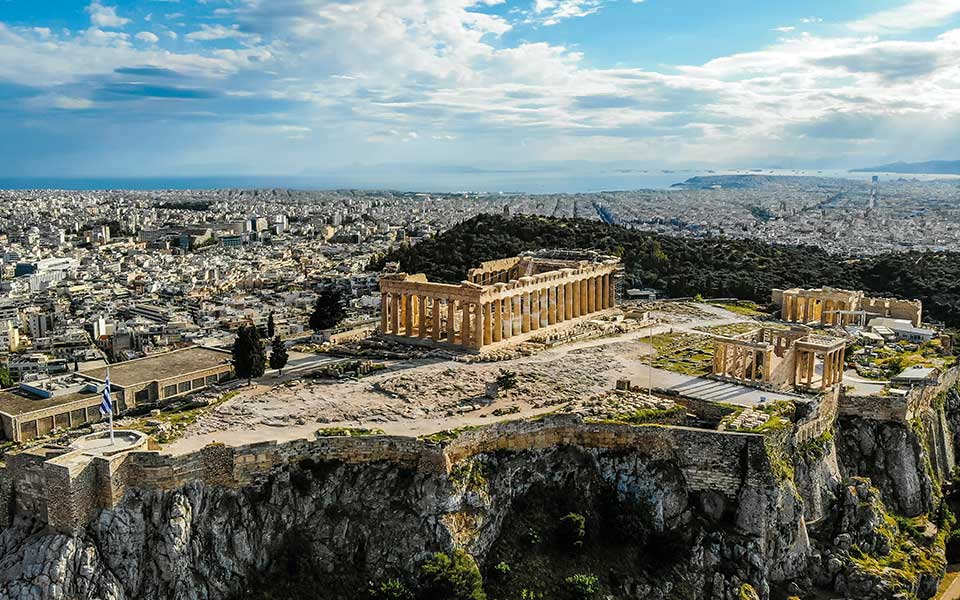
The stunning Acropolis, an aerial view from the east, with the Old Acropolis Museum (L), the Parthenon (C), and the Erechtheion and Propylaia (R).
© Ministry of Culture and sports/Ephorate of Antiquities of the city of Athens, photo: Getty Images/Ideal image
When you head to Athens, come prepared for adventure. Pack your curiosity, a healthy dose of stamina and comfortable footwear. Many sights – large and small, major and minor, resoundingly awesome and quietly amusing – await you.
Whether jostling among crowds at the Parthenon or exploring hidden corners of the ancient city, you’re following in the footsteps of countless travelers – ancient, medieval and modern – who also had the “history bug” and came to this venerable spot seeking the glory that was Classical Athens.
Whether it’s Periclean temples, sculpted maidens, colonnaded marketplaces, gilded icons, a marble-gated suburb, or the elegant façade of an Ottoman madrasa, Athens has much to offer.
Athens is a city of ruins, mysterious traces and, above all, imagination, where we can enjoy discovering the essence of Hellenic culture, an ever-evolving phenomenon that has nonetheless remained constantly fascinating through the centuries.
Below are some of the key sites to include on your itinerary as you explore the fascinating history of Athens.
UPDATE: Please note that due to the measures that may be implemented depending on the spread of Covid-19, opening times may differ from those listed below, and tickets may need to be booked in advance. It is advisable to check ahead before your visit.
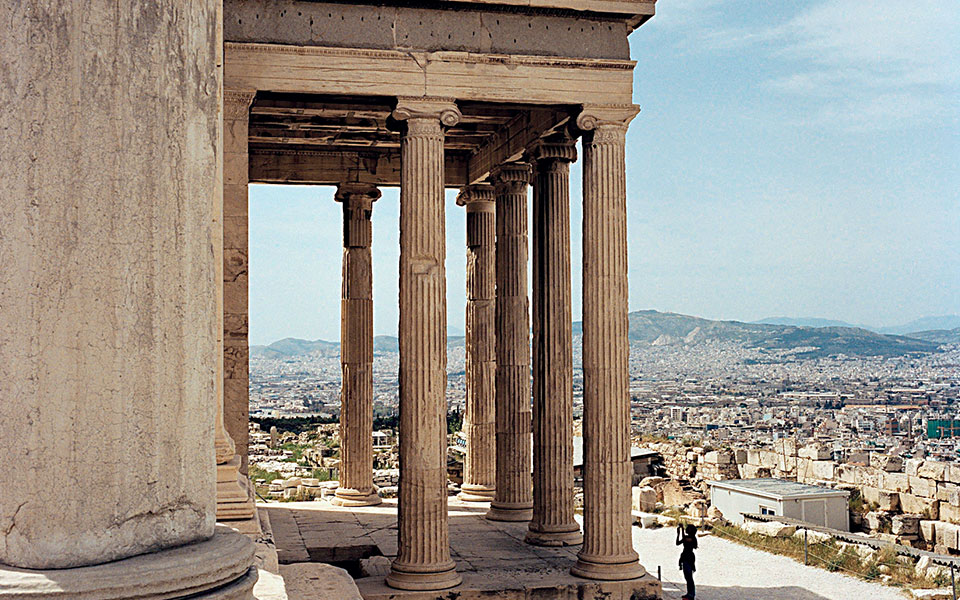
Acropolis Area
© Peter Rigaud/Laif
The Sacred Rock… THE place for hard-rockin’ history lovers! Athena’s Parthenon tops the bill, backed up by the Erechtheion, the Propylaia and the recently-restored Temple of Athena Nike. Around the slopes, don’t miss the Theater of Dionysus, the Sanctuary of Asclepius, the Odeon (“Music Hall”) of Herodes Atticus and the cave shrines of Pan and other ancient gods. On the adjacent Areopagus, Saint Paul gave one of his most powerful anti-pagan speeches.
The Acropolis, tel. (+30) 210.321.4172
Open daily 08:00-20:00 (summer hours), admission: €20.

Terracotta Nike (Victory) figures offer visitors a warm welcome to the Acropolis Museum.
© Nikos Pilos
The Acropolis Museum is a must-see when visiting the Sacred Rock, whether you’re pining for sculpture, architecture, mythical figures, bronze weaponry, ancient magic, or painted vases illuminating the lives of ancient Athenians. Here, you’ll find the Parthenon’s exquisitely carved decorations and the elegant Caryatids, in a new building that is itself a modern classic.
Acropolis Museum, 15 Dionysiou Areopagitou, tel. (+30) 210.900.0900, admission: €10
Open: Mon 08:00-16:00, Tue-Sun 08:00-20:00, Fri 08:00-22:00 (summer hours).

The Museum of Ancient Agora
© Panayiotis Tzamaros
Get a peek at the lives of ancient Athens’ diverse citizenry, traces of whose daily activities or ultimate fate are displayed in the Stoa of Attalos, a 2nd c. BC “shopping mall.” Don’t miss the warrior’s tomb with its “killed” sword; the eyelets and hobnails from Simon the Shoemaker’s House; the jury-selection machine; and the pot-shard ballots nominating Themistocles (and other figures of resentment) for ostracism.
Agora and Museum, 24 Adrianou, tel. (+30) 210.321.0185
Open daily 08:00-20:00, (summer hours), admission: €10.
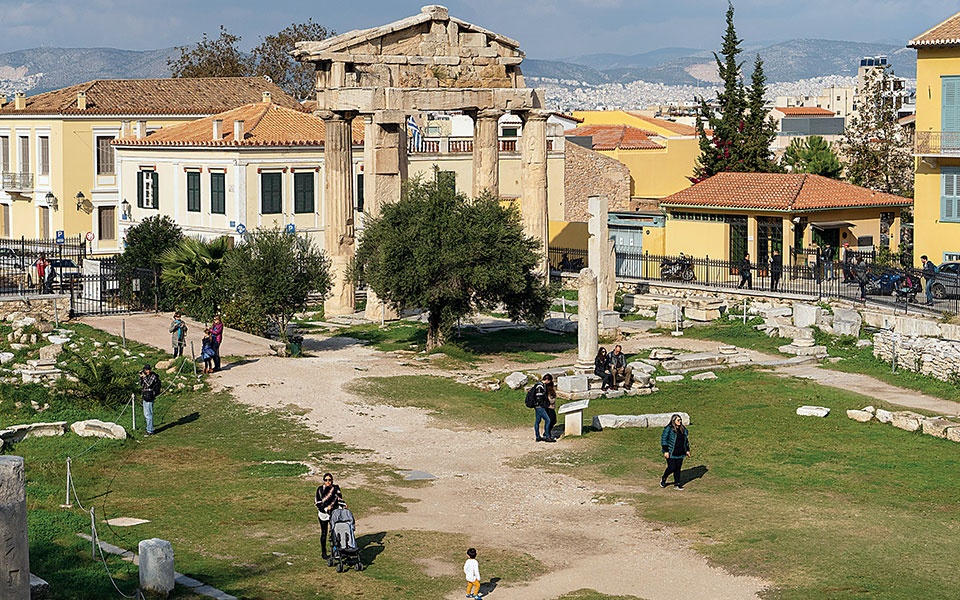
The Roman Agora
© Perikles Merakos
The Romans, Greece’s new overlords, revitalized aging, venerable Athens with a new agora, the personal project of Julius Caesar and his nephew Octavian (Augustus). Once home to merchants, shoppers and semi-literate prostitutes who left messages scratched on the market’s columns, the area boasts a number of distinctive monuments, including the Tower of the Winds, an ornate Ottoman-era seminary gateway and the newly restored Fethiye Mosque (17th c.).
6 Pelopida, tel. (+30) 210.324.5220
Open daily 08:00-20:00 (summer hours), admission: €8
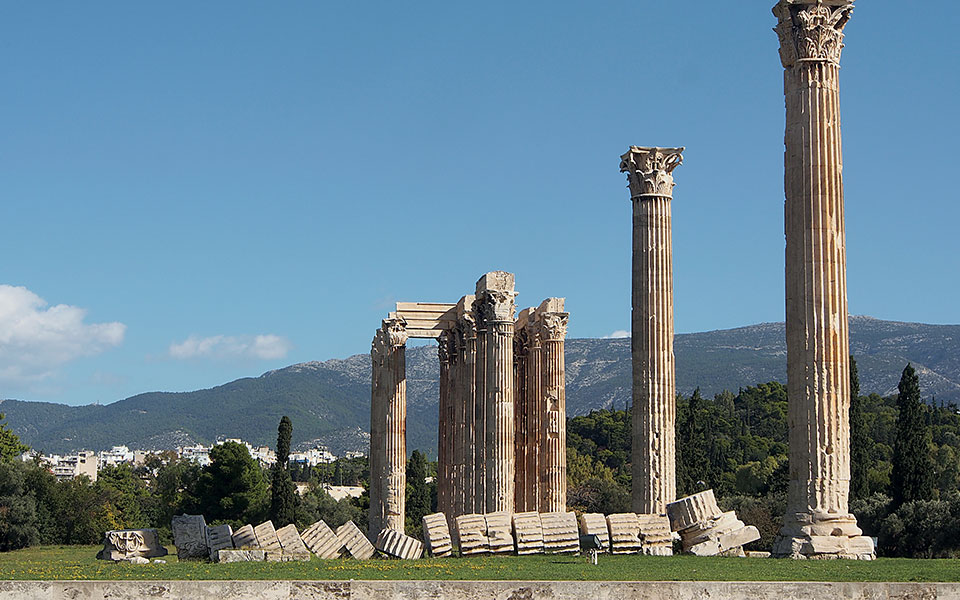
The city of Hadrian (Handrianopolis)
© Dimitris Tsoumplekas
This “new” district of Athens was developed by Hadrian, the greatest of Roman Hellenophiles. The district’s monumental entrance was the Arch of Hadrian, beyond which rose the enormous Temple of Olympian Zeus (or Olympieion). The banks of the Ilissos River, covered with shrines, temples and lush vegetation, made this area a particularly pleasant place to stroll.
Olympieion, entrance from Vasilissis Olgas, tel. (+30) 210.922.6330
Open daily 08:00-20:00 (summer hours), admission: €8
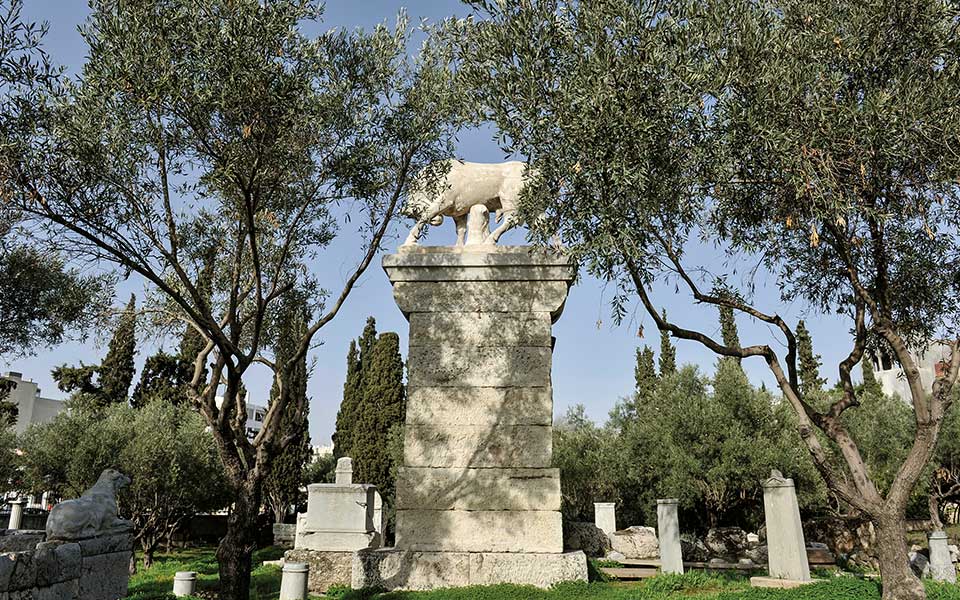
Kerameikos
© Vangelis Zavos
A riverine, clay-rich environment at the northwestern extremity of ancient Athens, Kerameikos was a pottery-production area that was also frequented by soldiers and prostitutes. Others came, too, as it was from here, through the Dipylon and Sacred Gates, that Athenians accessed the common and state cemeteries and set off on the annual procession to Eleusis. Plato’s extramural academy was a short walk away.
148 Ermou, tel. (+30) 210.346.3552
Open daily: 8:00-20:00 (summer hours), admission: €8
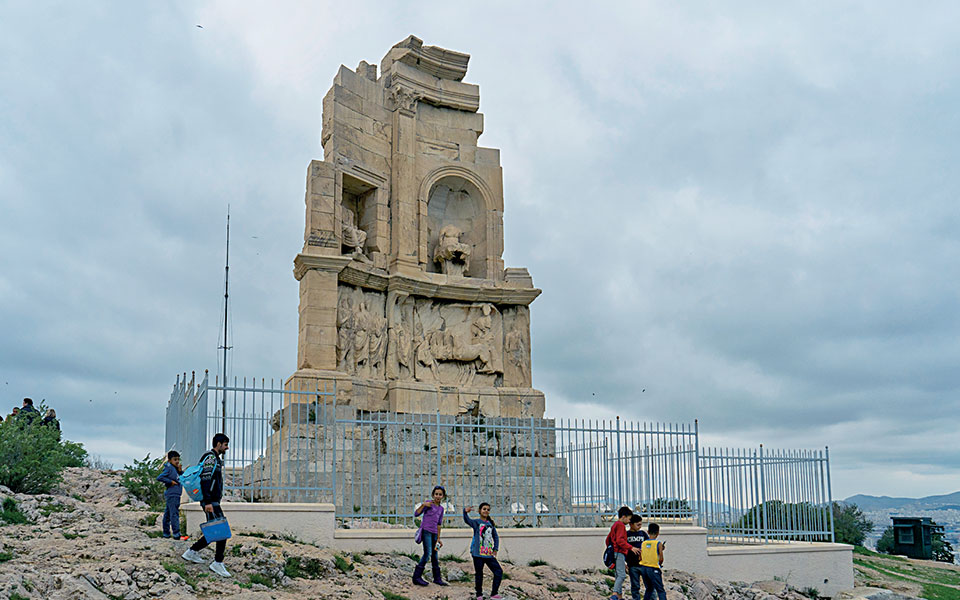
The Southwester Hills
© Perikles Merakos
The Pnyx Hill, southwest of the Acropolis, is home to a natural amphitheater once used for the People’s Assembly (Ekklesia). Here, ancient statesmen played to the crowds, delivering fiery speeches from a rock-cut rostrum with a panoramic view of the Sacred Rock and Athenian Agora. On the adjoining Hill of the Muses stands the Filopappos Monument, a prominent tomb for an exiled Commagene prince.
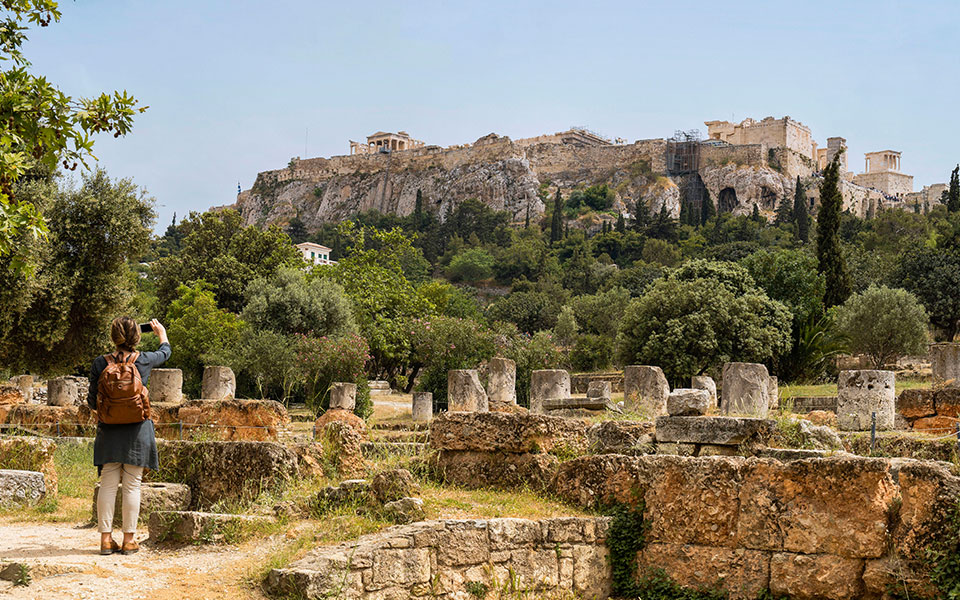
Ancient Agora
© Perikles Merakos
The heart of ancient Athens, the Agora was the city’s central square, market place and governmental headquarters, where adult citizens, high or low, strolled, shopped, reported for jury duty, watched street performers and offered sacrifices, crossing paths with the likes of Themistocles, Pericles and Socrates. The Temple of Hephaestus and Athena marked the traditional metalworkers’ district, while today the reconstructed Stoa of Attalos contains the Museum of the Ancient Agora.
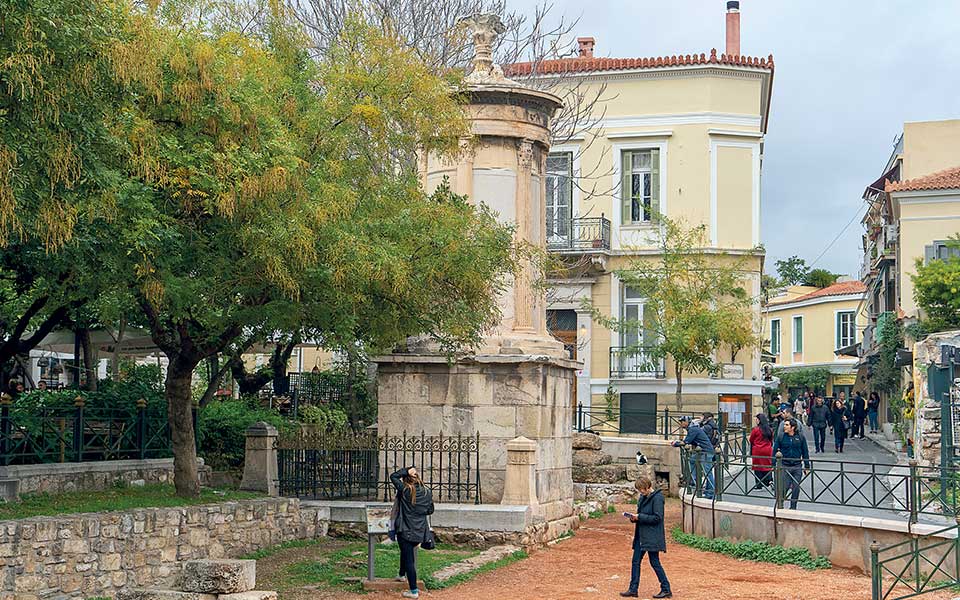
The Choragic Monument of Lysicrates
© Perikles Merakos
Hadrian also funded a new forum (agora), complete with a library and lecture halls. The Library of Hadrian’s central court later hosted two early Christian churches. East of the Acropolis stands the Lysikrates Monument, erected by a producer to commemorate his victory in the Theater of Dionysus. Lord Byron once used the hollow base of this oversized trophy-stand as his private study.
The Library of Hadrian, 3 Areos, tel. (+30) 210.324.9350, open daily 08:00-17:00, admission: €6.
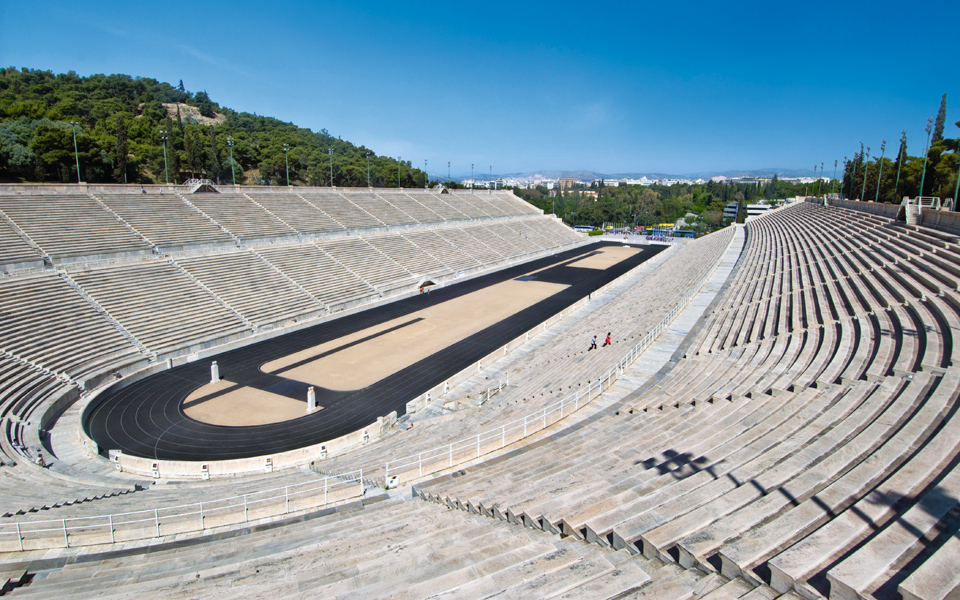
The Panathenaic Stadium
© Clairy Moustafellou
Meant primarily to serve Athens’ Panathenaic Games, the “Kallimarmaro” stadium was built in the 4th c. BC by Lykourgos, but given a marble veneering by Herodes Atticus almost five centuries later. After an extensive restoration project, the first modern Olympics were hosted here in 1896. This structure remains an extraordinary monument to timeless athletic achievement!
Panathenaic Stadium, Vasileos Konstantinou, tel. (+30) 210.752.2984-6
Open daily 08:00-19:00 (summer hours), admission: €6
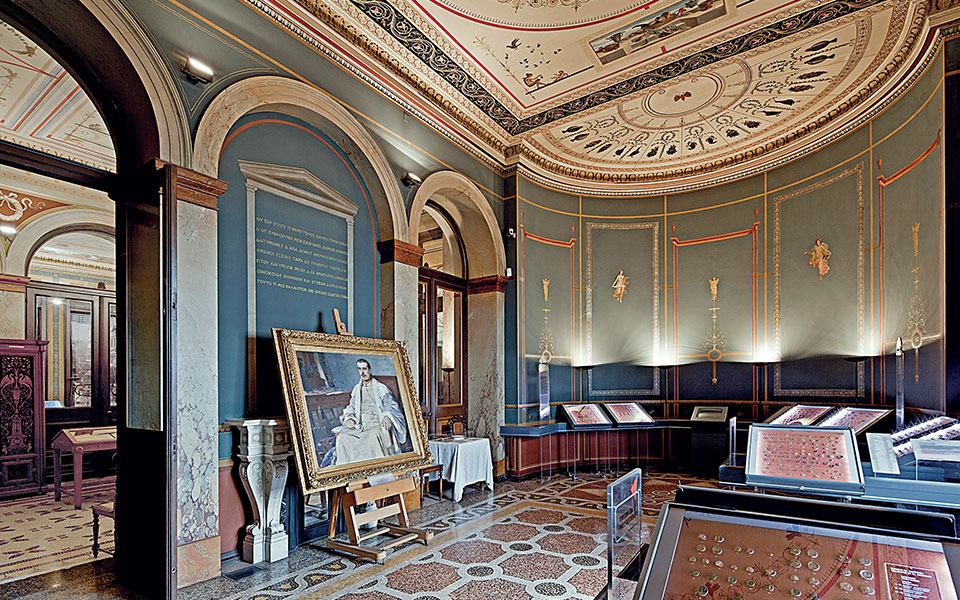
The Numismatic Museum of Athens
© Jaime Ardiles-Arce
The former residence of the wealthy German businessman Heinrich Schliemann, father of Greek archaeology, this luxurious mansion now hosts the Numismatic Museum. From its lavishly painted walls and decorative marble floors to brilliant displays of gold, silver and bronze coins, this unique exhibition space commemorates the influential role of money throughout history.
Numismatic Museum, 12 Panepistimiou, tel. (+30) 210.361.2519
Open: Wed & Fri-Mon 08:30-15:30, Thu 09:00-19:00, admission: €6.
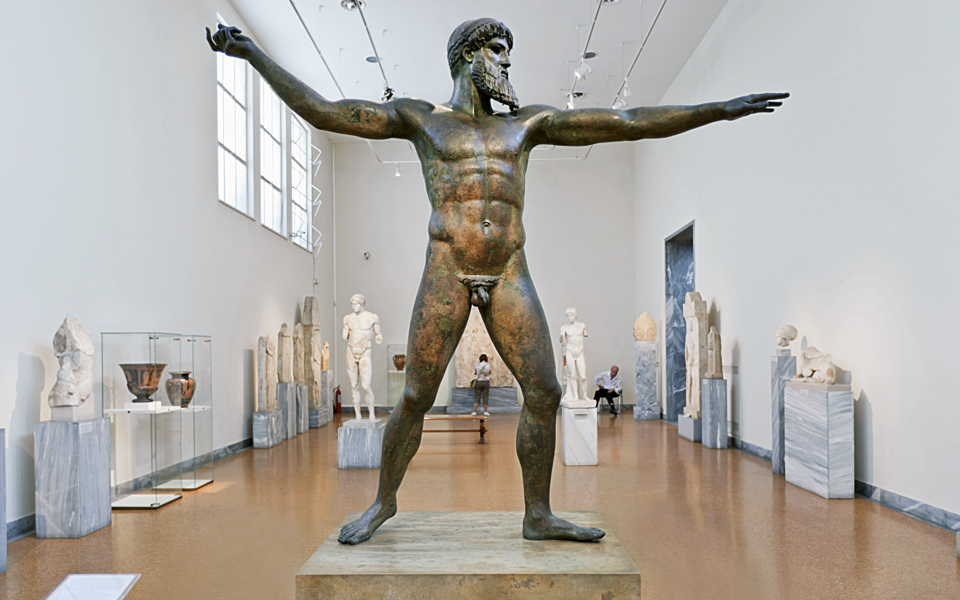
A Classical bronze statue of Zeus/Poseidon (ca. 460 BC), National Archaeological Museum.
One of the world’s truly great museums, where you’ll find exquisitely sculpted masterpieces of bronze and marble; golden artifacts from Mycenaean palaces; delightful traces of Santorini’s lively but ill-fated prehistoric town of Akrotiri; and a huge collection of vases with painted scenes featuring gods, heroes, favorite myths and fascinating glimpses into ancient life.
The National Archaeological Museum, 44 Patission, tel. (+30) 213.214.4800
Open: Mon, Wed-Sun 08:00-20:00, Tue 12:30-20:00 (summer hours), admission: €12
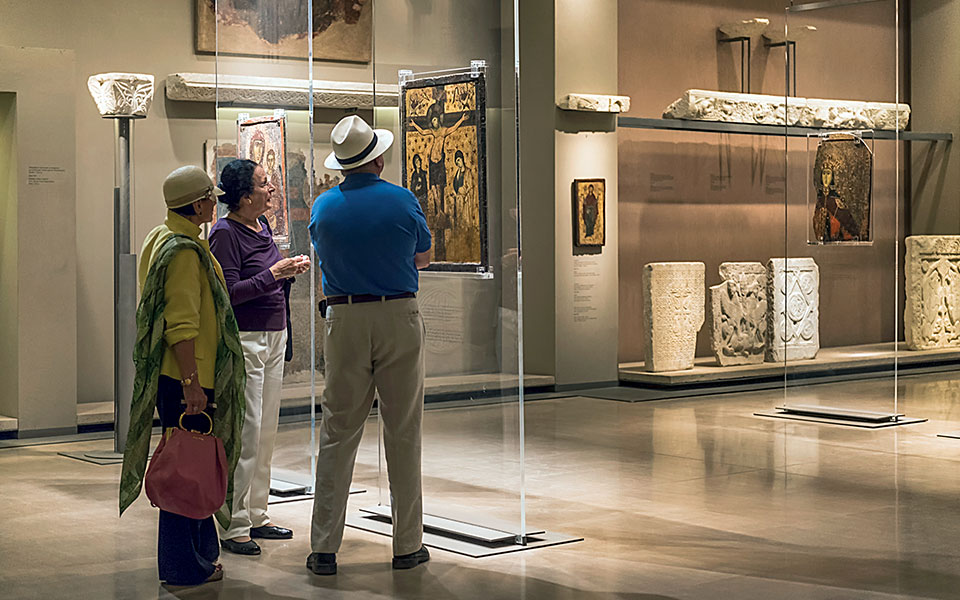
The Byzantine & Christian Museum
© Perikles Merakos
The Villa Ilissia – another 19th-century architectural gem that served as the winter palace of the Duchess of Plaisance, a French-American philhellene – now contains the BCM. Here, you’ll see the splendor and the far-reaching influence of Byzantium and of Greece’s post-Byzantine Christian artists.
The Byzantine & Christian Museum, 22 Vasilissis Sofias, tel. (+30) 213.213.9500
Open: Mon & Wed-Sun 08:00-20:00, Tue: 13:00-20:00, admission: €8.
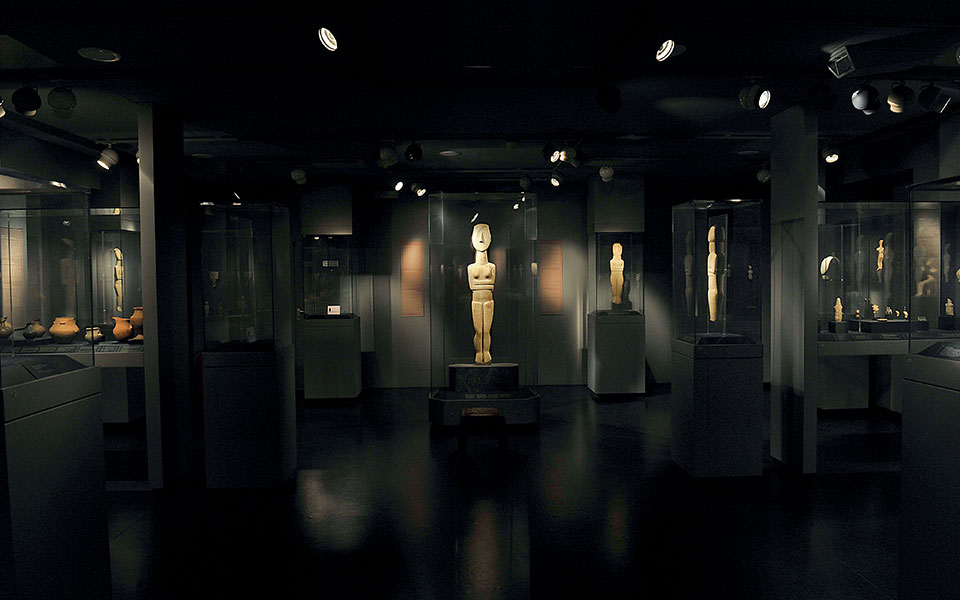
The Museum of Cycladic Art
© Vangelis Zavos
Among the best museums in Athens is the Goulandris Museum of Cycladic Art, which focuses on prehistoric Cycladic culture while also offering thematic exhibits that illustrate ancient Greek art (2000 BC-AD 395), gods and heroes, daily life, warfare and death. Also not to be missed are the unique Cypriot collection and – for kids – engaging interactive displays, touch screens and two short films.
The Museum of Cycladic Art, 4 Neophytou Douka, tel. (+30) 210.722.8321-3
Open: Mon, Wed, Fri, Sat: 10:00-17:00, Thu: 10:00-20:00, Sun: 11:00-17:00, admission: €8.
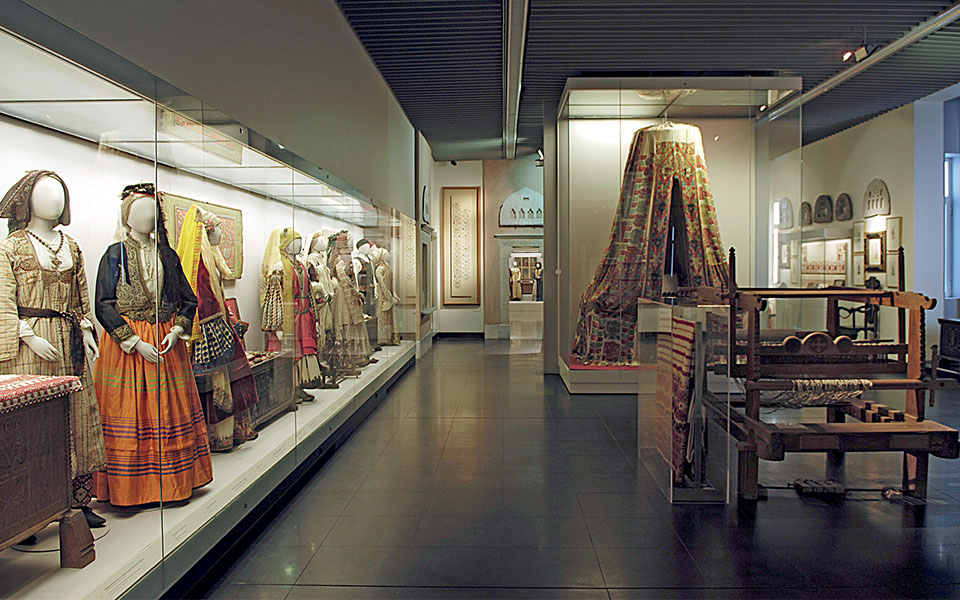
Benaki Museum
The Benaki Museum in Kolonaki offers a broad collection of ancient, medieval, Greek-Revolution-era and early modern artifacts and art, highlighting the full spectrum of Greece’s history and civilization. Fascinating exhibitions of contemporary art and photography are also available at the Pireos Street Annex, while Near Eastern art, jewelry, textiles, rare navigational devices and much more are displayed at the Benaki’s Islamic Art Museum in the Kerameikos district.
There is a €30 ticket that allows admission to all main archaeological sites in Athens.
The Benaki Museum, 1 Koumpari, tel. (+30) 210.367.1000
Open: Mon, Wed-Sat: 10:00-18:00, Thu: 10:00-00:00, Sun: 10:00-16:00, admission: €12.
Whether drizzled on lentils, stirred into...
The Goethe Institute's exhibition explores Athens'...
Exploring the eateries, stories, and shifting...
Whether you’ve just stepped off a...